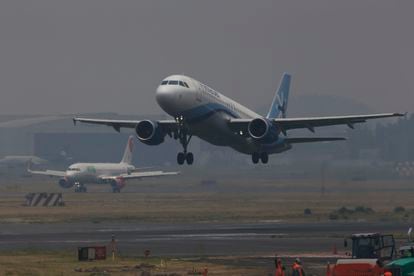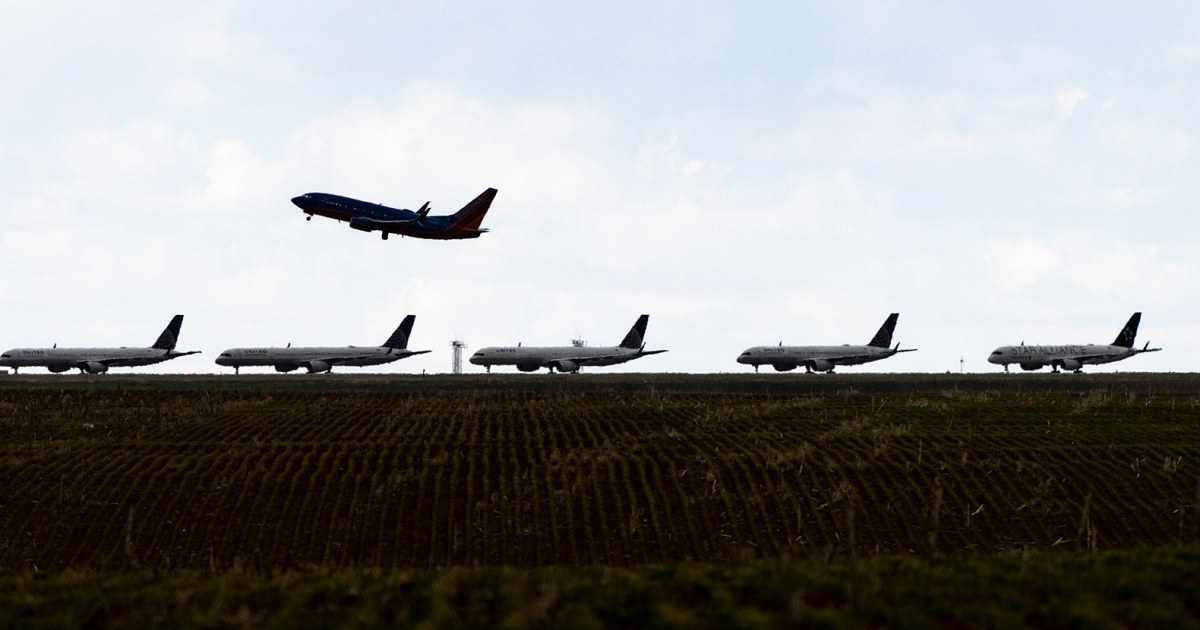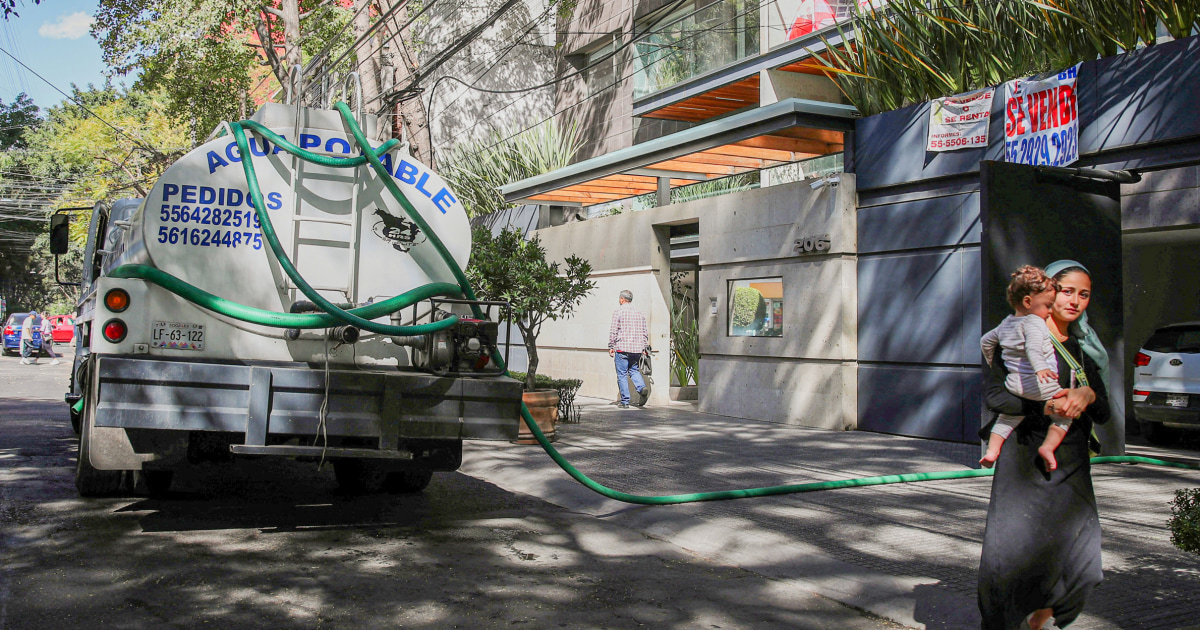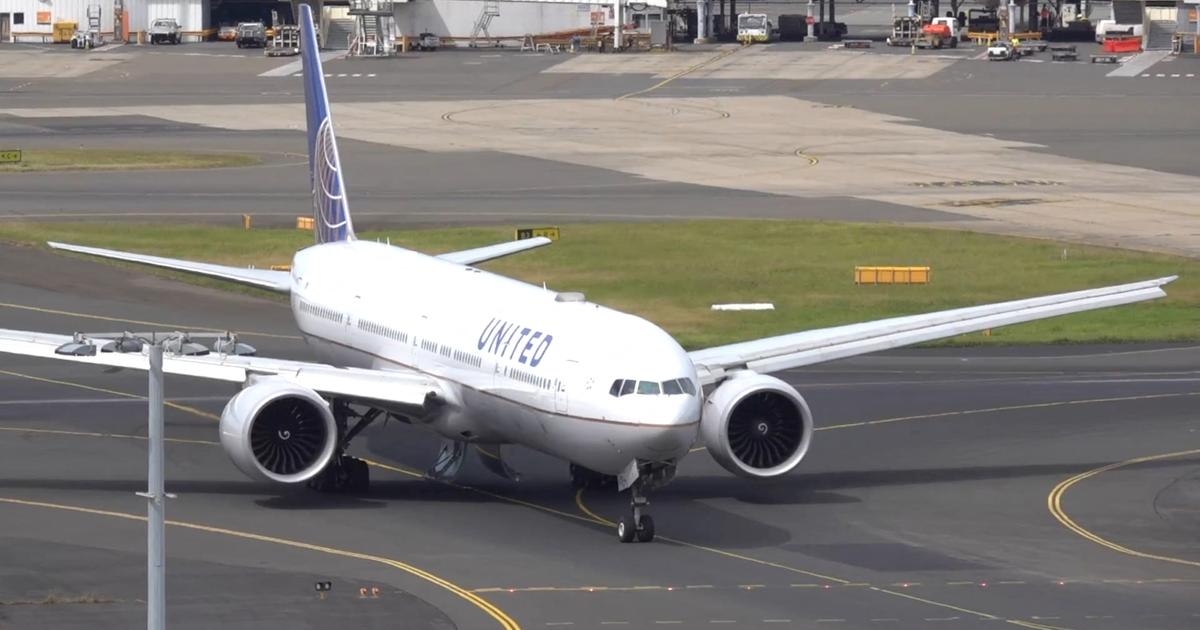A plane lands at the Mexico City International Airport. Marco Ugarte (AP)
Mexico City has lived this week with its eyes on its sky, one of the busiest on the continent.
Incidents accumulate.
In just four days, two planes have been about to land on a runway already occupied by another device and have had to take flight to avoid an accident.
Although these types of maneuvers are not unusual in the capital, air traffic controllers point out that incidents have increased in the last year.
Faced with the growing alarm of the population, the federal government has said that “order must be put in place”.
There is no easy solution.
In the Mexican aviation crisis, human errors, labor conflicts, lack of preparation and a permanent threat of saturation are mixed.
These are the keys:
A succession of human errors
First, the immediate causes.
Although the investigation is still ongoing, authorities have said Saturday's incident was due to "human error" by air traffic controllers.
"They allowed me to enter the head of the runway that had been designated for a plane to descend," said the Undersecretary of Transportation, Rogelio Jiménez Pons.
Volaris, the company that owns the device involved, pointed out that these situations "do not depend on the airlines."
The same incident was repeated on Wednesday with an Aeroméxico plane that had to take flight when it was going to land.
The airline has stated this Thursday that this was due to the fact that another device "was slow" to leave the runway.
The authorities' response to these incidents has been to minimize their relevance.
Undersecretary Jiménez Pons said that what happened on Saturday was an "isolated event."
After Wednesday's event, the Ministry of Communications has stated that it is "a usual procedure in aviation" and that "it did not represent any risk to the aircraft."
Increase in incidents
Despite the government's account, the air traffic controllers' union has reported a 300% increase in the number of incidents in the last year.
The group has registered 100 cases, of which 30 were serious.
A third of the incidents occurred at the Mexico City International Airport (AICM), which accounts for around half of all landings and takeoffs in the country.
Along the same lines, the International Federation of Pilots pointed out last week in a security bulletin that it has information on "several incidents" of planes arriving in Mexico City with low fuel levels due to diversions or excessive waiting in the air.
In addition, the association pointed to "a significant number of alerts" due to the proximity of aircraft to the ground.
The Government has only confirmed one "official" incident report due to proximity to land, which occurred on June 15.
disgruntled air traffic controllers
The air traffic controllers, whom the authorities point to to explain the incidents, have been experiencing a turbulent employment situation for months.
The union of the union has accused the managers of Navigation Services in the Mexican Air Space (Seneam), the responsible agency, of "labor terrorism" for imposing work days of more than 12 hours for several consecutive days.
After the incident on Saturday, the head of the agency, Víctor Hernández, was forced to resign and was replaced by an air traffic controller with more than 40 years of experience.
The controllers' union maintains that there is a deficit of 300 professionals in the country because the recent redesign of the airspace has increased the workload.
However, Seneam exercised in 2021 a budget of 3,804 million pesos, about 180 million euros, compared to the 6,004 initially approved, according to information from the Public Account.
The threat of saturation
The AICM has been under the threat of saturation since 2014. That year 34 million passengers were served and the authorities detected that the maximum number of operations was exceeded in most time slots.
In March of this year, the Government once again declared the airport saturated to limit airport activity.
After Saturday's incident, the Executive prohibited the opening of new routes from the AICM and forced cargo and charter flights to move to the Felipe Ángeles International Airport (AIFA), inaugurated in March and practically empty.
However, experts point out that the problem at this time is not saturation because the level of operations prior to the pandemic has not yet been recovered.
In 2021, the AICM served 36 million passengers, 28% less than its 2019 peak.
The difficult coexistence of two airports
The sky over Mexico City has become more complicated since the inauguration of the AIFA, one of the star projects of this Government.
The new airport, located about 40 kilometers from the AICM, has forced a redesign of the airspace.
Approaches, which used to be made from the north of the capital, are now made from the south and west.
Although the government insists the recent incidents are not related to the changes, the International Federation of Pilots said controllers appeared to have received "little training" on how to operate the new airspace.
The Government's decision to build an airport so close to the AICM has been fraught with controversy from the start.
Analysts and pilots have pointed to a possible incompatibility.
Mitre, a prestigious American consulting firm specializing in air navigation, studied the AIFA option years ago and discouraged it due to the "unnecessary complexity" involved in operating two nearby terminals simultaneously.
Degraded air safety category
While the incidents are taking place, Mexico is struggling to regain the highest category in air safety granted by the US Federal Aviation Administration (FAA). A year ago, the US agency downgraded the Latin American country after detecting during an audit “several areas of non-compliance with the minimum standards of the International Civil Aviation Organization”.
The FAA pointed to an insufficient number of air inspectors and their low compensation, among other elements.
Because of the degradation, Mexican airlines cannot open new routes to the US. The government has said this week that it will "double efforts" to recover it, but it is not yet known when that could happen.
subscribe here
to the
newsletter
of EL PAÍS México and receive all the informative keys of the current affairs of this country
Exclusive content for subscribers
read without limits
subscribe
I'm already a subscriber








